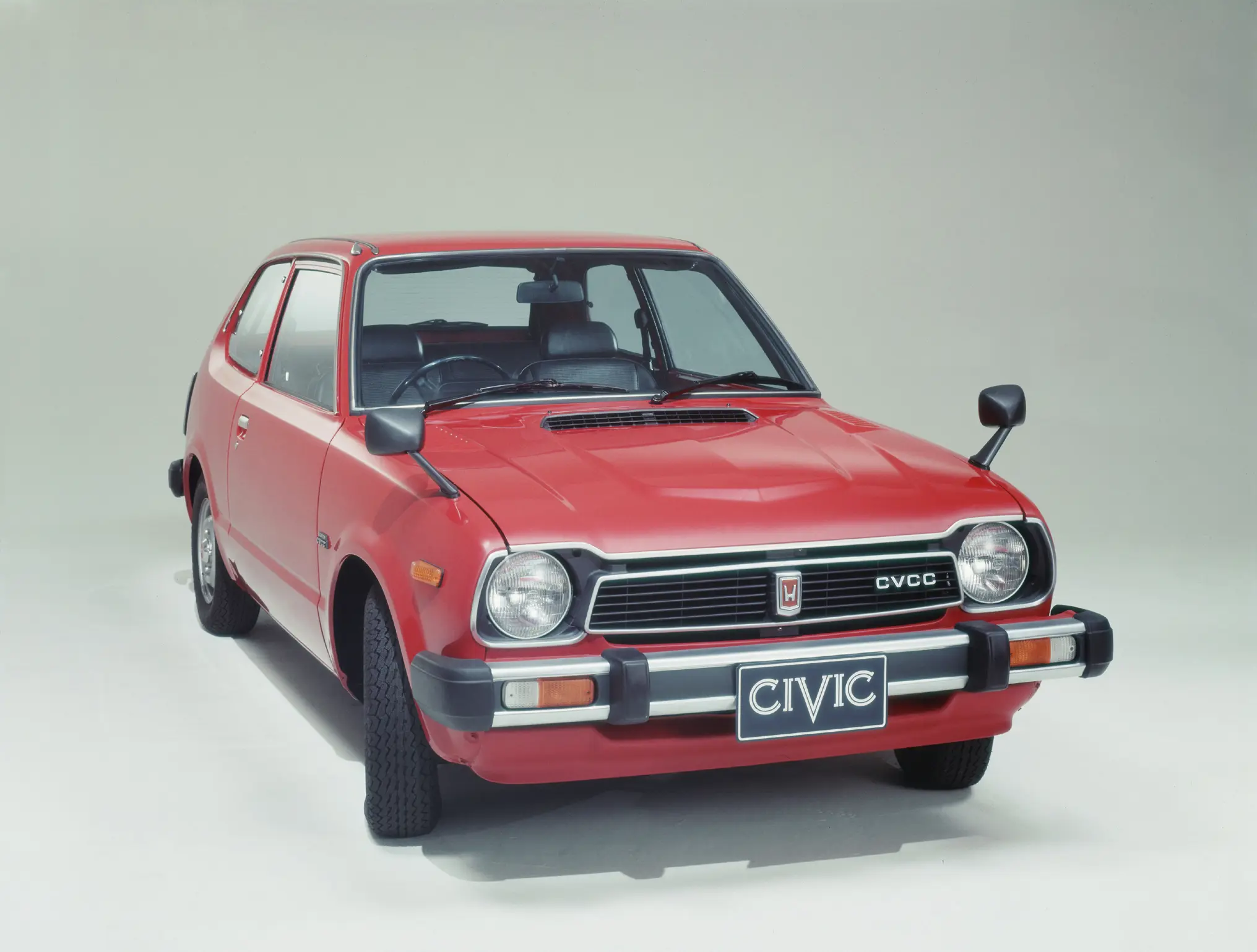The Honda Civic at 50
06 July 2022
Fifty years ago this month, British motorists read of a new Honda car that combined a transversely mounted belt-driven all-alloy 1.2-litre overhead camshaft engine combined with all-independent suspension and a very attractive appearance. Of course, you had never before considered ‘buying Japanese’, but this Civic does look very appealing…
The story commenced in 1970 when Honda initiated work on a replacement for its N360/N600 ‘Kei Car’, and their aim was a “world-class car that is light, quick and compact”. The original two-door version made its bow on 11th July 1972, followed by the three-door version in September. One key export market was the USA, and Car and Driver noted:
Honda has finally become a car builder. Contrary to what your neighbor may have told you, the 600 sedans and coupes you see nipping around the ankles of Buicks and Biscaynes on the Los Angeles freeways are not cars. And neither was the old imitation-Sprite sports car that everybody (including your Honda dealer) has forgotten about by now. All of those devices were more like enclosed motorcycles.

Motor Trend thought the Civic made “life easier, better, more comfortable, somehow more acceptable”, and in 1973, the firm sold 38,957 cars in the States, as opposed to 65 in 1969. The latest Honda had created a niche as chic urban transport, although the idea of one on the freeway is not particularly reassuring. The C&D report found that “while the Civic may not tremble fearfully in the bow wake of a semi, it does cringe noticeably. None of that is bad engineering. It’s just an inherent quality of small cars”.
Across the Atlantic, Honda cars first appeared at the 1966 Earls Court Motor Show, where the company displayed an S800 Convertible. Sales of the N600 began in 1968, and it attracted considerable attention from the British motoring press. However, the Civic established the marque with the four-wheeled motorist, although some were still distributed via motorcycle dealerships. Imports commenced in spring 1973, with prices starting at £999, ranging to £1,199 for the 3-Door Deluxe with optional ‘Hondamatic’ transmission. The Evening Standard found the Civic to be “probably the most ‘European’ of the cars available from Japan: and certainly one of the most likeable”. Two years later, Car magazine thought it “extremely good value as a potent and practical little town car or a single man’s runabout”.
By the time Honda introduced generation models in 1979, the Civic could be seen across the country. One of the reasons for its success was that BL largely neglected the Mini during the 1970s. Another is the lack of a domestically-built ‘supermini’ until the UK debut of the Ford Fiesta in 1977. But perhaps most importantly, many Britons were becoming more inclined to buy cars on their merits rather than their national origins, with former Leyland customers looking to France, Germany, Italy – and the Far East. As Motor Sport wisely observed in their 1973 road test - “it is sensible to look the opposition straight in the face and the excellent Honda Civic is an example of what the Japanese Motor Industry can confront us with”.
And today, the Civic is in its eleventh generation, with over 27 million examples sold worldwide…
